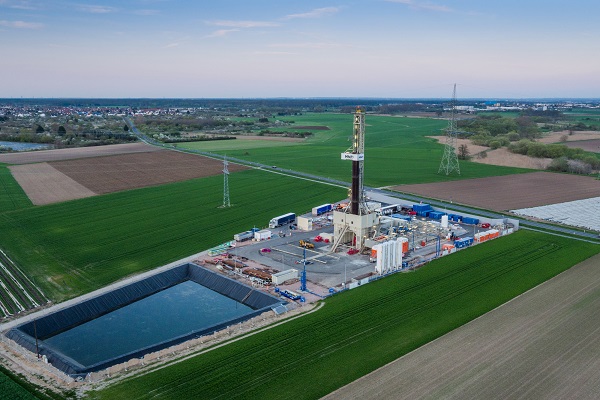The aim of the course is to gain an overview of basic physical laws and to master basic knowledge of physics needed in the study of technical university and their application in practice.
1. Introduction. Physical concepts, quantities, units. Matter, material, physical field. Mass point. Kinematics of mass point motion. Position of mass point, reference system, trajectory, path. Speed, acceleration, natural acceleration components. Classification of movements.
2. Dynamics of mass point motion. Inertial mass, momentum, force, impulse of force, laws of motion. Some types of forces. Newton's equation of motion.
3. Mechanics of motion of mass points and rigid body. Moment of inertia. Moment of force, moment of momentum, pair of forces. Mechanical stress of rigid bodies: mechanical stress, deformation, modulus of elasticity.
4. Mechanical vibration. Undampened, dampened and forced vibration. Pendulums. Graphical representation of oscillating motion. Mechanical waves. Huyghens principle. Sound.
5. Fluid mechanics. Ideal and real liquid. The laws of hydrostatics (Pascal law, Archimedes law) and hydrodynamics (continuity equation, Bernoulli equation) for ideal liquid.
6. Gravitational field. Newton's law of gravity, gravitational field characteristics, gravitational field forces. Gravitational and gravity field of the Earth, movements in the gravity field of the Earth.
7. Thermals. Temperature, temperature scale and heat. Basic concepts of kinetic theory of gases, internal energy of gas, work and heat, heat capacity, thermodynamics. Calorimetric equation.
8. Reversible state changes in ideal gas. Circular action with ideal gas. First, second and third thermodynamic law. State changes - phase diagram.
9. Electrostatic field. Electric charge and its properties, characteristics of electrostatic field. Capacity (capacitor). Stationary electric field. Electric current, conductivity, resistance, electromotive voltage, work and power of electric current.
10. Origin of magnetic field. Stationary magnetic field. Characteristics, forces acting on charge and electric current in magnetic field.
11. Non-stationary magnetic field. Electromagnetic induction, intrinsic and mutual induction. Origin and basic properties of alternating current, electromagnetic wave generation - RLC and LC circuit.
12. Optics. Light as a part of electromagnetic radiation. Spectrum of electromagnetic radiation. Dualism of electromagnetic radiation. Wave properties of light (interference, reflection, refraction, bending).
1. Introduction. Physical concepts, quantities, units. Matter, material, physical field. Mass point. Kinematics of mass point motion. Position of mass point, reference system, trajectory, path. Speed, acceleration, natural acceleration components. Classification of movements.
2. Dynamics of mass point motion. Inertial mass, momentum, force, impulse of force, laws of motion. Some types of forces. Newton's equation of motion.
3. Mechanics of motion of mass points and rigid body. Moment of inertia. Moment of force, moment of momentum, pair of forces. Mechanical stress of rigid bodies: mechanical stress, deformation, modulus of elasticity.
4. Mechanical vibration. Undampened, dampened and forced vibration. Pendulums. Graphical representation of oscillating motion. Mechanical waves. Huyghens principle. Sound.
5. Fluid mechanics. Ideal and real liquid. The laws of hydrostatics (Pascal law, Archimedes law) and hydrodynamics (continuity equation, Bernoulli equation) for ideal liquid.
6. Gravitational field. Newton's law of gravity, gravitational field characteristics, gravitational field forces. Gravitational and gravity field of the Earth, movements in the gravity field of the Earth.
7. Thermals. Temperature, temperature scale and heat. Basic concepts of kinetic theory of gases, internal energy of gas, work and heat, heat capacity, thermodynamics. Calorimetric equation.
8. Reversible state changes in ideal gas. Circular action with ideal gas. First, second and third thermodynamic law. State changes - phase diagram.
9. Electrostatic field. Electric charge and its properties, characteristics of electrostatic field. Capacity (capacitor). Stationary electric field. Electric current, conductivity, resistance, electromotive voltage, work and power of electric current.
10. Origin of magnetic field. Stationary magnetic field. Characteristics, forces acting on charge and electric current in magnetic field.
11. Non-stationary magnetic field. Electromagnetic induction, intrinsic and mutual induction. Origin and basic properties of alternating current, electromagnetic wave generation - RLC and LC circuit.
12. Optics. Light as a part of electromagnetic radiation. Spectrum of electromagnetic radiation. Dualism of electromagnetic radiation. Wave properties of light (interference, reflection, refraction, bending).
